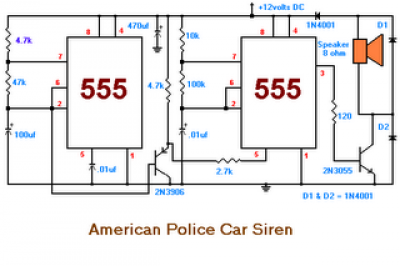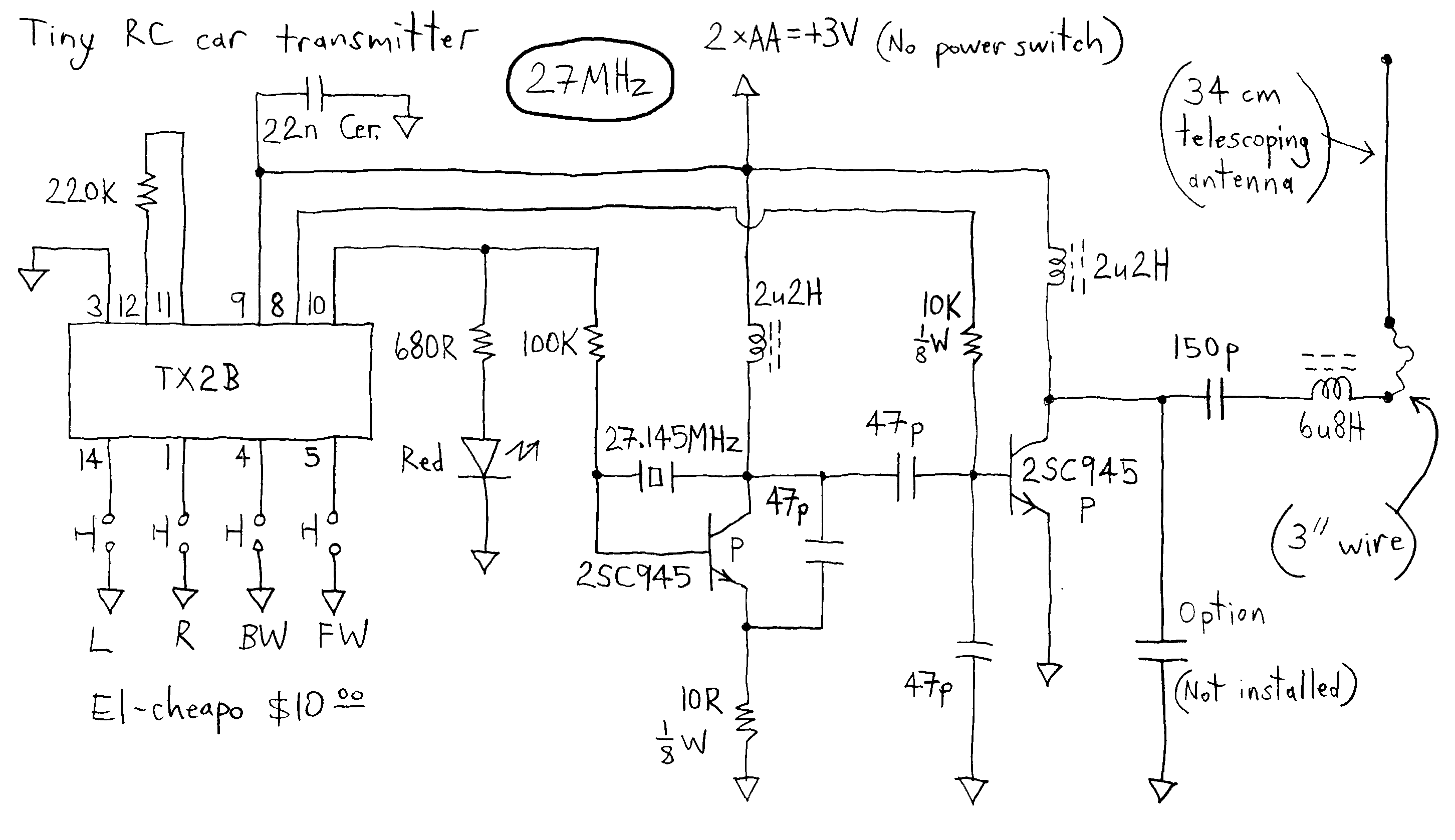
American Police Car Siren by IC 555

The second circuit simulates the siren of an American police car. It utilizes two 555 timers. The 555 timer on the right is configured as an alarm tone generator, while the second 555 timer on the left operates as a low-frequency astable timer, generating a ramp waveform of approximately 6 seconds. This waveform is buffered by a transistor and is used to frequency modulate the tone generator. The transistor serves to amplify the signal sent to the speaker.
The circuit comprises two 555 timer integrated circuits (ICs), each serving distinct functions to replicate the sound of a police siren. The first timer, positioned on the right, is set up in a monostable mode to produce a square wave tone, which simulates the alarm sound. This timer's output frequency is adjustable, allowing for variations in the siren tone, which is essential for realism.
The second timer, located on the left, operates in astable mode, generating a continuous ramp waveform with a period of approximately 6 seconds. This waveform is crucial for modulating the frequency of the tone produced by the first timer. The modulation creates a more dynamic and realistic siren effect, mimicking the varying pitch heard in actual police sirens.
A transistor is integrated into the circuit to buffer the output from the second timer. This arrangement strengthens the signal, ensuring that it is sufficiently robust to drive a speaker. The use of a transistor not only enhances the output signal but also provides isolation between the timer circuits and the speaker, preventing potential damage to the timers from load variations.
The overall design of the circuit emphasizes simplicity while effectively achieving the desired sound output. The use of common components such as the 555 timer and a transistor makes the circuit accessible for hobbyists and educational purposes, providing a practical example of sound synthesis using basic electronic components.The second circuit simulates the siren of an American police car. It uses two 555 timers in the circuit. The 555 on the right is wired as an alarm tone generator and the second 555 timer on the left is wired as a low frequency astable timer which generates a ramp waveform of about 6 seconds that is buffered by the transistor and again used to freq uency modulate the tone generator. The transistor is used to help strengthen the signal to the speaker 🔗 External reference
The circuit comprises two 555 timer integrated circuits (ICs), each serving distinct functions to replicate the sound of a police siren. The first timer, positioned on the right, is set up in a monostable mode to produce a square wave tone, which simulates the alarm sound. This timer's output frequency is adjustable, allowing for variations in the siren tone, which is essential for realism.
The second timer, located on the left, operates in astable mode, generating a continuous ramp waveform with a period of approximately 6 seconds. This waveform is crucial for modulating the frequency of the tone produced by the first timer. The modulation creates a more dynamic and realistic siren effect, mimicking the varying pitch heard in actual police sirens.
A transistor is integrated into the circuit to buffer the output from the second timer. This arrangement strengthens the signal, ensuring that it is sufficiently robust to drive a speaker. The use of a transistor not only enhances the output signal but also provides isolation between the timer circuits and the speaker, preventing potential damage to the timers from load variations.
The overall design of the circuit emphasizes simplicity while effectively achieving the desired sound output. The use of common components such as the 555 timer and a transistor makes the circuit accessible for hobbyists and educational purposes, providing a practical example of sound synthesis using basic electronic components.The second circuit simulates the siren of an American police car. It uses two 555 timers in the circuit. The 555 on the right is wired as an alarm tone generator and the second 555 timer on the left is wired as a low frequency astable timer which generates a ramp waveform of about 6 seconds that is buffered by the transistor and again used to freq uency modulate the tone generator. The transistor is used to help strengthen the signal to the speaker 🔗 External reference





